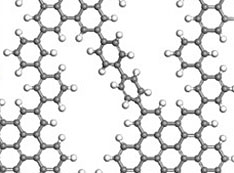Safety Update
improvements to CFN safety
January 25, 2019

Wai-Lin Ng
Recently, one of our researchers accidentally got a needlestick in the finger while trying to recap a needle and syringe. Fortunately, in this case, the researcher was safe. The researcher appropriately reported the injury to CFN staff and was accompanied to the Occupational Medicine Clinic for evaluation and first aid.
I want to take this opportunity to reflect on what happened and learn from the incident so we can prevent similar injuries in the future. In this situation, the researcher was cleaning a syringe with alcohol and then tried to recap the needle for reuse later on. The syringe was being used to withdraw or inject a solvent into a microscope sample holder. When the researcher attempted to recap it, the needle stuck the researcher’s left finger.
What went wrong? Needles should not be recapped when it is not necessary to do so. In fact, in medical and biological applications, recapping a needle is prohibited to prevent worker exposure to potentially infectious agents. In chemical laboratories, needles may be used to inject small quantities of solutions into analytical equipment, such as a liquid chromatography system, or to withdraw water-sensitive chemicals from sealed containers. The concern in such settings is the potential for introducing harmful chemicals or nanomaterials into the body.
While you work at CFN laboratories, please be mindful of the following important safety practices when you use sharps (e.g., razor blades, needles, glass pipettes) or sharp tools (e.g., scalpels, knives):
- Review the Experimental Safety Review (ESR) document with your supervisor or host for details on where sharps may be used and how they should be handled.
- Use a sharps container when disposing of any sharps; do not place them in a waste container.
- Do not remove needles from a lab to use elsewhere or for other applications that are not permitted.
Most importantly, we value your feedback on how we can do things more safely. Feel free to stop by to discuss with me or any CFN staff how we can improve laboratory practices for handling sharps and sharp tools.
Know the Content of Your Safety Approval Form
When a new proposal is submitted, the principal investigator or the proposer completes a Safety Approval Form (SAF), which provides the safety information that identifies the equipment and materials that will be brought to the CFN. A description of the experimental tasks, a hazards analysis, safety precautions, and chemical Safety Data Sheets must be provided. The form is reviewed by the CFN safety and operations staff. Users will only be granted facility access with an approved SAF.
For experiments that present unique hazards or risks, the proposer should consult with the facility points of contact and me well in advance so we can plan accordingly to ensure safety. Requests for changes to the SAF—such as adding experimenters to the proposal and changing experiments or materials used— should be done as soon as possible because the review process can be lengthy. The SAF may be approved with additional training requirements and/or conditions for conducting the work.
Proposers can access approved SAFs online. All experimenters should obtain a copy of the SAF from the proposer and review and understand its contents. Any additional training, procedures, or conditions for acceptance are identified on the form. I strongly recommend that you bring along a copy of the SAF when you arrive at the CFN.
As always, we welcome your feedback. We look forward to productive and safe operations at the CFN as we begin the new year.
—Wai-Lin Ng
ES&H Coordinator
2019-14361 | INT/EXT | Newsroom












